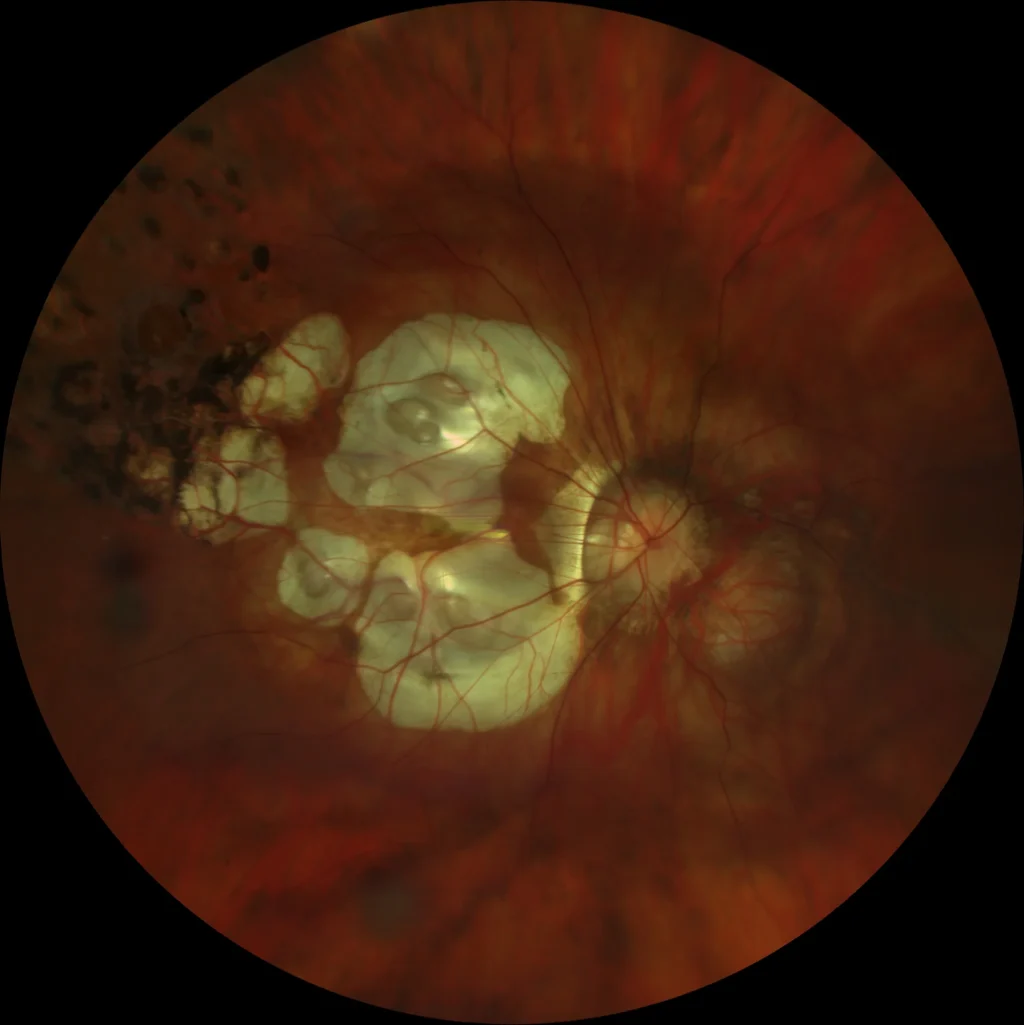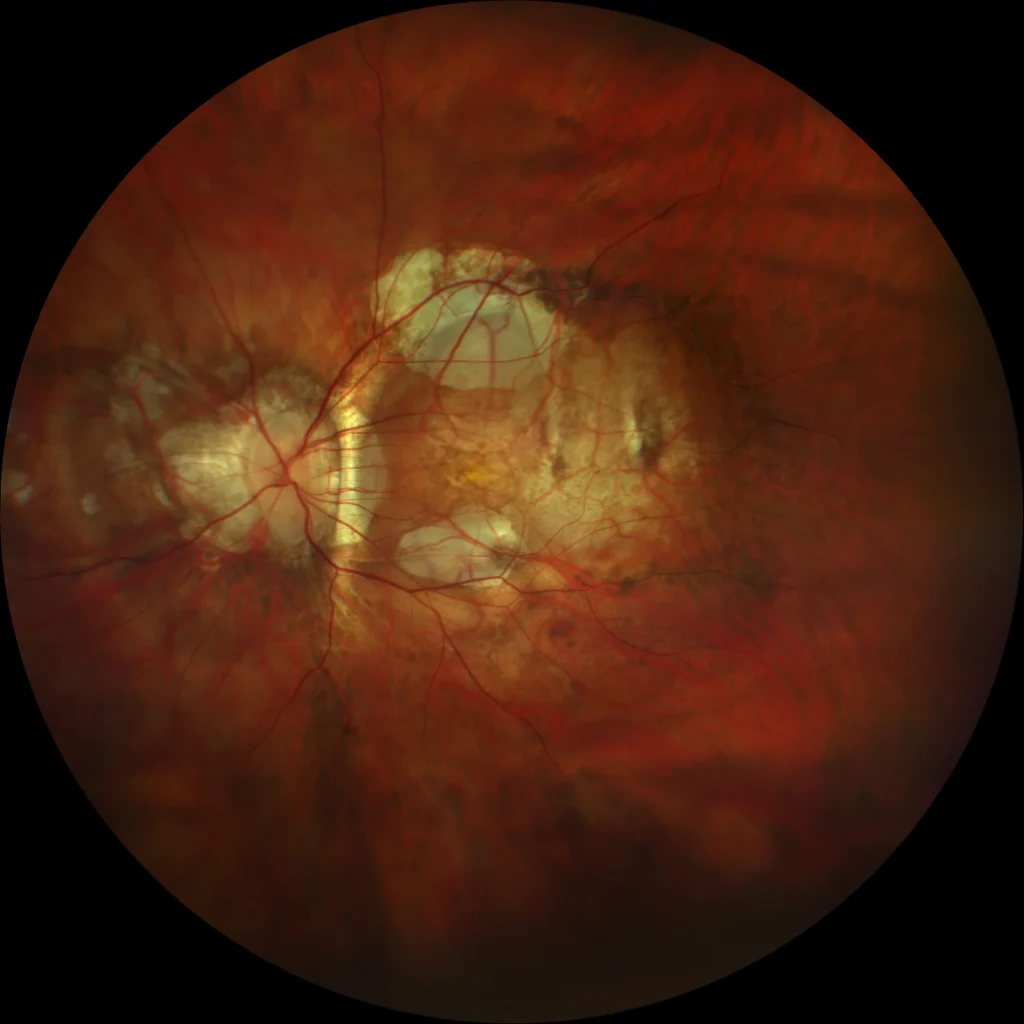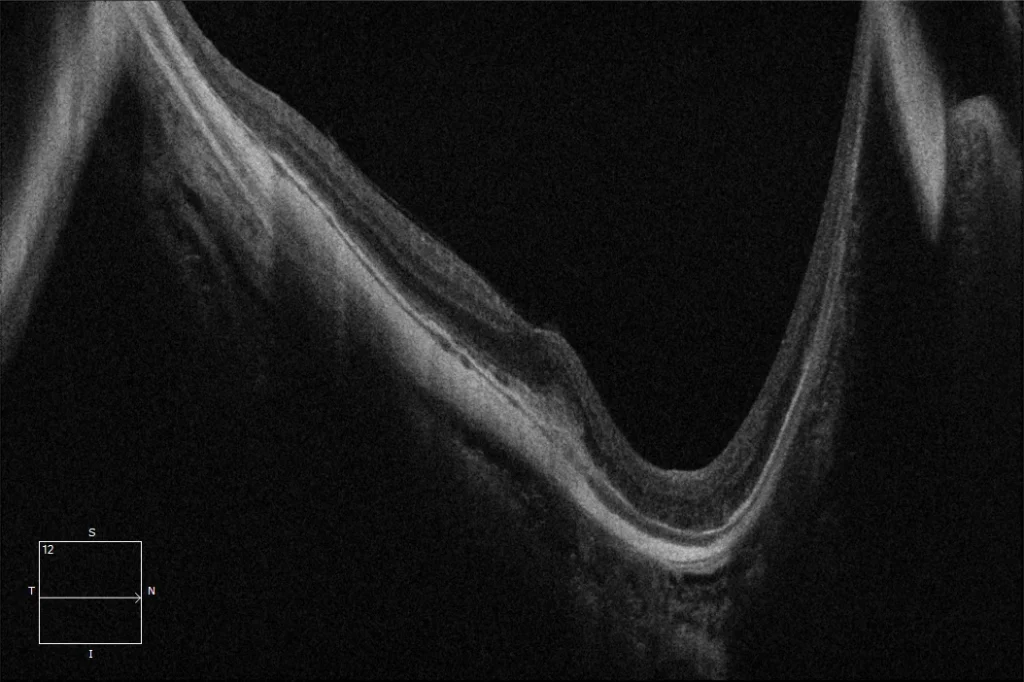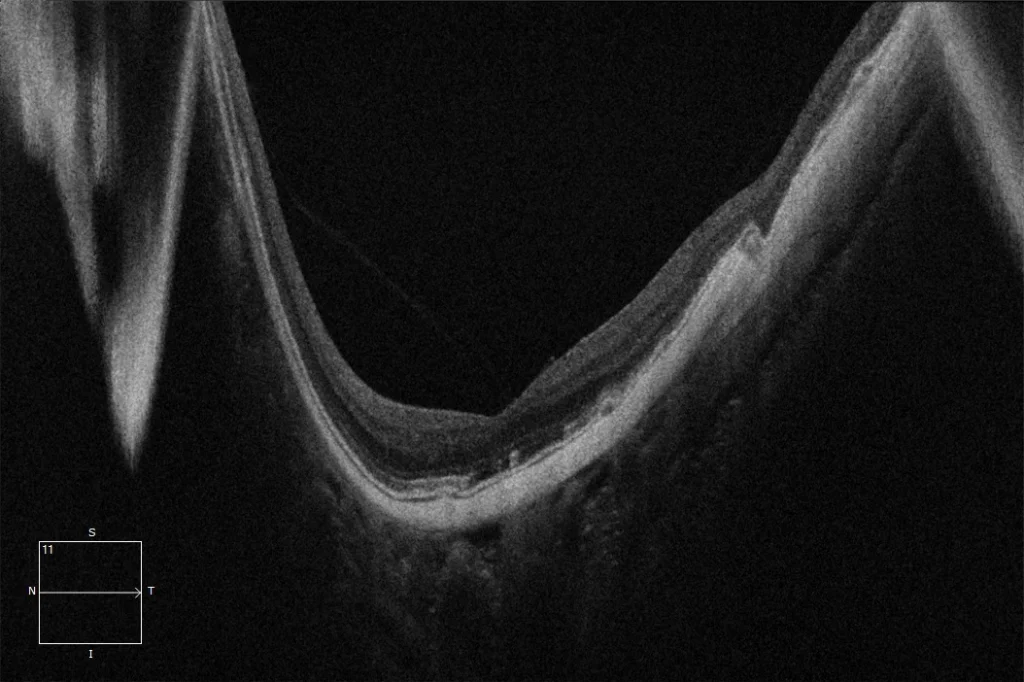Posterior Staphyloma
OD: It appears as a compound staphyloma (Curtin classification) with two protrusions, one covering the posterior pole and the other encompassing the papilla and the nasal area, with a border or septum temporal to the papilla. We can observe plaques of coioretinal atrophy in the juxtafoveal posterior pole with the presence of a juxtafoveal neovascular membrane of a brownish-grayish tone at the edge of the upper atrophy plaque.
Compound staphyloma where a temporal border/septum can be clearly seen to the papilla that divides two protrusions (staphylomas), one that encompasses the posterior pole, and the other that encompasses the nasal region to the papilla. It presents plaques of peripapillary chorioretinal atrophy and superior and inferior to the macula.
OD: On OCT we can see the concavity formed by the staphyloma affecting the posterior pole. A juxtafoveal subretinal neovascular membrane without fluid is also seen, but with evidence of growth compared to the last visit.
Description
Posterior staphyloma is the most characteristic sign and the main marker of pathological myopia. Spaide defined it as an evagination or protrusion of the ocular wall that has a radius of curvature smaller than that of the surrounding curvature of the eye wall. This definition was intended to differentiate staphyloma from a simple uniform elongation of the eyeball backwards.
Its prevalence varies depending on two factors: age and axial length.
There is a clear association between posterior staphyloma and many of the characteristic lesions of high myopia (chorioretinal atrophy, myopic tractional maculopathy, myopic neovascular membranes, visual field defects, etc.) that can lead to loss of visual acuity.
The most recent Ohno-Matsui classification does not take into account the internal borders of staphylomas and therefore there are no compound staphylomas but they are included within the other types. This classification includes the following staphylomas:
- Type I: Wide macular staphyloma
- Type II: Narrow macular staphyloma
- Type III: Peripapillary staphyloma
- Type IV: Nasal staphyloma
- Type V: Inferior staphyloma
- Others
Curtin’s classification took into account the internal edges or septa of the staphyloma, so in addition to those previously mentioned, it included a series of compound staphylomas.




